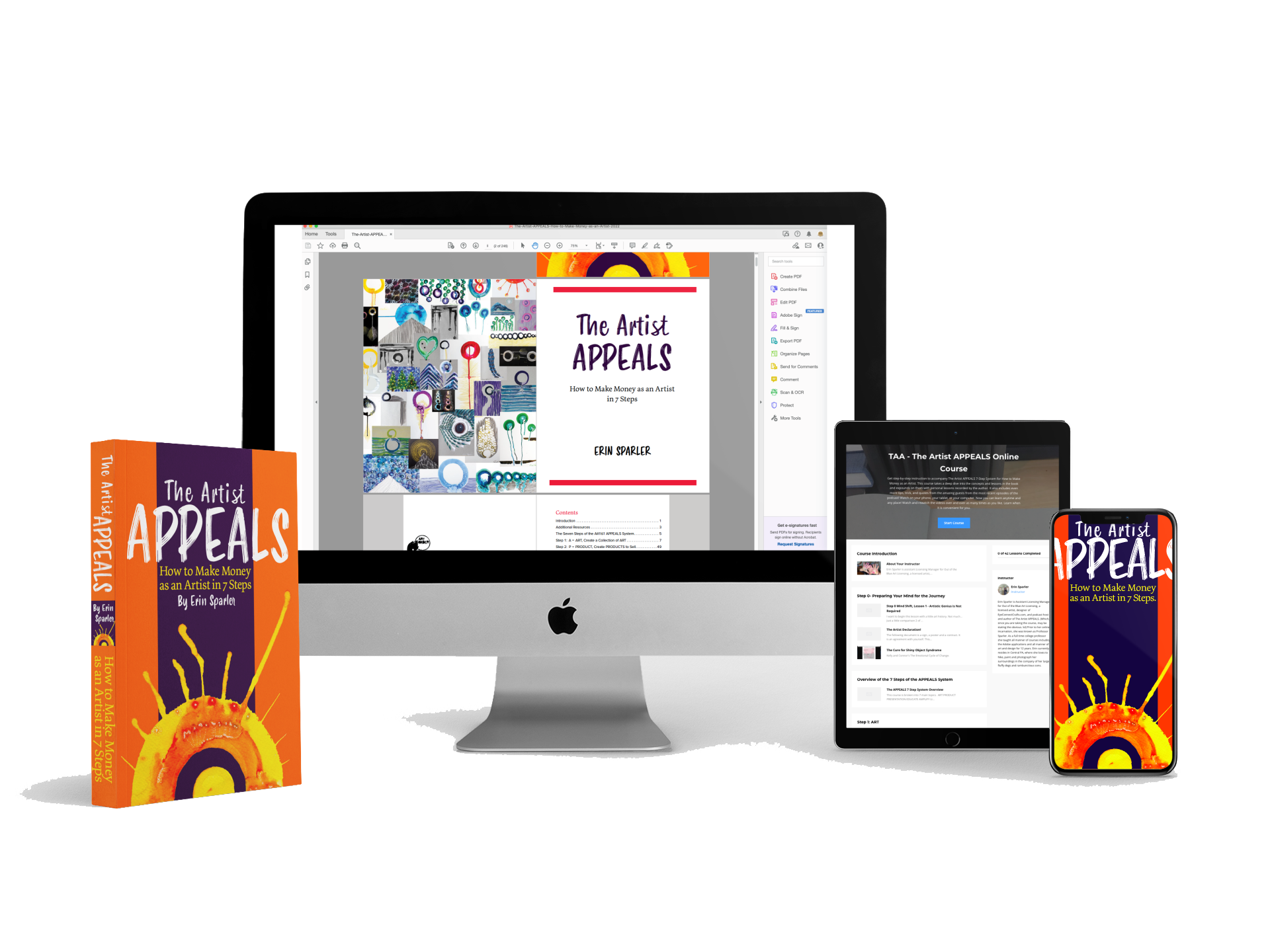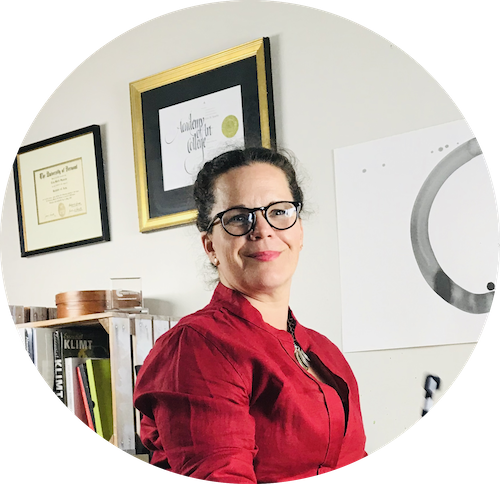Sandra Evertson sits down with Prof. Erin Sparler to talk about how she developed her business and came to this space. Sandra Evertson is the owner of Relics and Artifacts and author of Fanciful Paper Projects, Fanciful Paper Flowers and Memories of a Lifetime.
Timestamps:
[0:47] Introducing Sandra Evertson’s Background
[2:06] Talk with Sandra Begins
[2:11] Sandra’s Backstory
[7:37] Sandra’s Current Goals
[9:05] Criteria For A Good Piece
[10:49] Sandra’s Technical Process
[15:08] How Sandra Presents and Ships Her Work
[18:17] Educating Her Audience
[19:43] Growing Her Following
[22:18] Coping With Stress
[23:18] Works Sandra Makes For Herself
[24:56] Wholesale VS. Retail
[26:47] Repeat Buyers
[27:57] What Success Looks Like For Sandra
[30:07] How Artisan Society Is Making A Comeback
[31:27] Book Recommendations by Sandra
[33:25] Art As Storytelling
[34:38] Sandra’s Websites and Links
Highlights and Quotes from the Podcast:
Q: Was there some sort of defining moment that led you down this career path?
A: I was selling antiques and then I started making things from these little bits and parts of antiques that were too good to toss out. I would put these pieces together just different assemblages and people were buying those more than they were buying the antique pieces.
Q: What was your biggest fear or hurdle you had to overcome in making that transition?
A: That’s a huge move to go from LA where things are going well and you’re being successful. Move to Texas, which I know can be rural in some areas. My whole life has just kind of been about diving in. I never thought about it. I was going to make it work no matter what. I had to put the work in to get it to happen.
Q: How do you work with your employees to present products and make it a an experience for the end user?
A: That is really what it’s all about from the beginning of the process to the end of the process where the customer has the piece in their hand at home. I tend to have to take a lot of control over it because all the photographs are my own, the way that it’s presented, that way I can control exactly the way that I want it to look.
I do want it to be protective when packaged, so it’s in bubble wrap. It’s also in this beautiful little shredded paper that surrounds it so that it looks like it’s an antique already. Then the shipping box it goes in. Also, the whole computer thing and being where we’re at with internet right now, Shipstation. You can track every single thing for every person and you make sure that everything gets shipped out the next day or the same day that it was ordered for customer service. You get ratings on it. I just want my customers have a good experience from the beginning to the end, as well. We actually get our mail picked up, pick it up every day, and we ship out packages every single day.
Q: What do you look for in an art piece?
A: Sometimes it is a gut feeling. I’ve also had really wrong gut feelings. I do have to guess what the general public is going to like more. I’m getting better at that because my tastes are fairly eclectic. I am working gradually into a market where there are more people. I want to bring these people along and give them more unique taste as well, instead of all the kind of generic things that are on the market.
I didn’t want to damage the art pieces so I started making castings that I could then paint and add the stones to and mosaic and different things. Those blanks became a product that was just obvious to me that this needed to be on the market. That’s where the whole thing evolved from.
Q: How do you cast your molds?
A: It’s got to be something sturdy enough to be cast. If it’s not something I can actually cast, I’ll re-sculpt it. I’ll make myself an original copy of it or as similar as possible so that it still retains that charm of an old piece. I will cast it either with plaster or with a silicone rubber. Then I make my molds. I make my castings from those original molds that I create. Also, I’ll take an antique piece and I will make a few things out of it or I’ll make one piece and add pieces to it. Then I cast those in stone resin so that they have a nice textured feel almost like porcelain.
Q: How many do you make in a run?
A: I’ll make hundreds in a run. I have a couple people that help me in our shipping department. It’s a small business. The thing I like about doing it myself, I was working with a large corporation, and we were making them in China and I just didn’t feel really good. I didn’t have a lot of control over it.
Q: What is your goal in what you do now?
A: It’s all kind of ever evolving. I more or less have kind of followed that little thing that clicks inside you that makes you go Oh, well, I’m going to do this. And now I’m kind of gonna do that. And that’s kind of what I still do. The more I work and the more I create, the more ideas I get to create new things. Those ideas are all laid out there kind of ahead. I just have to make those moves towards them.
Q: What does success look like for you?
A: Where I am now, where I’ve slowed it down, made better products, I feel successful. Putting out super good product that is not as commercial, that’s maybe more individual. It also educates the buyer and makes them more apt to buy more unique things. Our whole environment of retail is changing. It’s going back to how it was in the early 1900s where all these little boutiques are like the way Europe is. It’s settling into more of that kind of thing and more sustainable and more of an experience, rather than just going to a big department store, buying something cheap and going home and making something out of that. People are putting more time into what they’re doing making nicer things for themselves and just having a different kind of our experience.
Q: Do you have any books you would recommend?
A: I love Joseph Campbell and I love the Power of Myth. If there was one book that I would just give everyone, it would be that little book because then that would lead them into all of his writings. That guy was a genius. It put everything together and made all these little neurons Connect.
Q: How do you reach out to your customers?
A: Once a year we give them like a $500 coupon to purchase more. I’ll take the top three of all the customers we’ve had for the year and they always will buy double that. It’s just such an advantage for us. And for them as well.
Q: How important is the tactile element?
A: The tactile element is hugely important because it it allows the craft artists to then finish it with whatever they want to finish it with. Iit gives them so much flexibility.
Q: How do you educate your audience to the benefits of your blanks and the quality of your blanks?
A: Instagram is a huge thing for me. I find it’s the best for showing unique artists, because there’s so many companies on there. And there’s so many artists and people and anything you can imagine is there on Instagram at your fingertips. It’s my favorite place for advertising. Facebook,I just go through, do little posts of what the product is, what the item is, give it a little story about where the piece came from. They do all have a story and I add those stories into what the final product is, what the blank is. And then then the artists, they carry that on, they put their thoughts and emotions and designs into the piece and it becomes something of their own.
Q: How have you grown your following?
A: It’s just been all organic. People do show their artwork, and they’ll refer back to us, and we get people like that. Instagram is like a mini job for me. I’ll go and I’ll find people that are interested in what I’m doing. I’ll like their stuff and follow them. Then they come back and look at mine and follow me. For me, it’s about growing my business and growing sales. And the way that I do it by going and following people and looking at their work and commenting on their work and getting them to come back and take a look at what we’re doing. I try to give it an hour a day. I just make it a habit. It’s the place where I have been able to grow much more quickly because of just dedicating that little bit of time to it.
Q: Do you sell wholesale and retail?
A: We did sell wholesale for a while, but it was just too much. I want to keep it more where I can work with my customers directly. I think it’s a better experience from me and them. I do become friends with a lot of my customers. They’re all repeat buyers.
Resources:
Sandra Evertson – Website Facebook Instagram
Relics & Artifacts – Instagram Facebook
Fanciful Paper Projects: Making Your Own Posh Little Follies – Amazon
Fanciful Paper Flowers: Creative Techniques for Crafting an Enchanted Garden – Amazon
Memories of a Lifetime: Weddings: Artwork for Scrapbooks & Fabric-Transfer Crafts – Amazon
Shipstation – Website
Connect With Your Host Erin Sparler:
Buy Original Artwork by Erin Sparler
Join Erin LIVE in the studio on the Facebook Page: What is Fine Art?!
Follow & Like The Art APPEALS FaceBook Page
Buy Movable Craft Kits for your kids at EyeConnects Crafts

